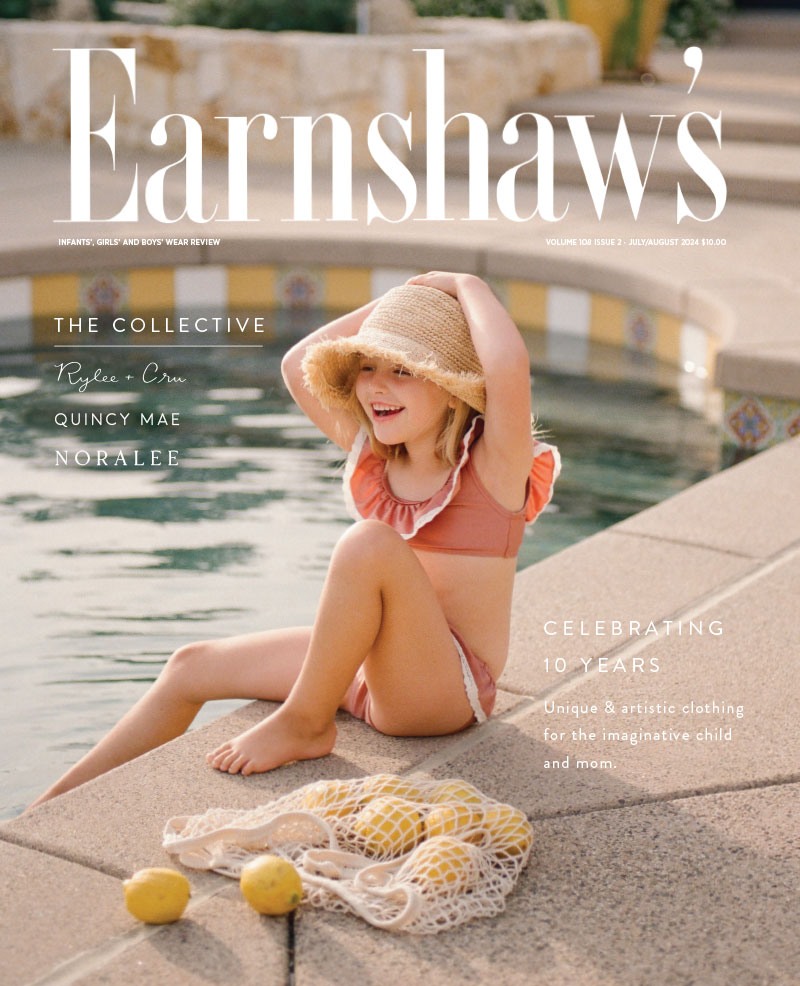Fashion’s mélange of styles means standing out is more crucial than ever for children’s brands. Here’s an interesting experiment, ladies: Take a look at the jeans in your closet. I bet there’s an array of silhouettes and colors. Slim, dark denim for casual date nights. Ripped and faded boyfriend jeans for the weekend. White capris […]
Fashion’s mélange of styles means standing out is more crucial than ever for children’s brands.
Here’s an interesting experiment, ladies: Take a look at the jeans in your closet. I bet there’s an array of silhouettes and colors. Slim, dark denim for casual date nights. Ripped and faded boyfriend jeans for the weekend. White capris for the beach and barbecues. Maybe a pair of mint-green jeggings you picked up on a whim.
Unlike previous decades, what you won’t find is one prevailing style. And that observation goes far beyond women’s denim. Just take a peek at our fashion and trend pages the past few issues. In the span of just one year, kids’ fashion has ventured from the Wild West to a ’60s surf club. The predominant look seems to be: Look everywhere.
It certainly leads to a roller coaster of a ride for apparel and accessory designers. On one hand, there’s an abundance of artistic freedom to explore inspirations from an array of decades. On the other, today’s niche trends are liable to fade away as quickly as they surface. Just listen to any teen designer lament the challenges of mastering the mercurial demographic. For trend-driven kids’ brands, staying ahead of the curve seems to require a near-prescient knowledge of fashion fads, along with an obsessive following of today’s top magazine editors, fashion bloggers, celebrities and stylists. Add to that list another growing category of trendsetters: The Instagram star.
If you thought kids were getting their style cues just from Taylor Swift and Katy Perry, think again. Though the pop queens have an astounding 15 million combined followers on the popular photo-sharing site, there’s a growing army of mini style mavens also making their mark. For example: Four-year-old Juliette Meyer-Harley, featured in our new column, The Pulse, on p. 72. More than 2,200 people follow @shopdarlingclementine, the handle for Juliette’s mom, Lindsay Meyer-Harley, owner of online children’s shop, Darling Clementine. A big reason for Lindsay’s many fans? The stylish pics she posts of Juliette and occasionally her 5-month-old son, Jack. And Juliette is just the tip of the iceberg: More and more aspiring stylists—as young as age 4 or 5—are amassing thousands and thousands of followers on the site. When it comes to kids’ fashion today, inspiration truly is everywhere.
So where does that leave children’s brands and retailers looking to succeed in such a wide, diverse and unpredictable market? Believe it or not, in a pretty good spot. True, no single brand can really rule the industry these days, but there’s a pretty big piece of the pie available for creative companies who offer a fresh take on fashion—like Munchkin, the subject of this month’s Q&A on p. 30. Long known for its innovative juvenile products, the brand is staking out space in the apparel arena with its new Mbaby line, which offers functional twists on everyday baby items—like a double-sided front to keep babies warm in their crib, and convertible footies to accommodate fast-growing tots.
The new Mbaby line is perfectly poised to shake up the industry, but childrenswear companies needn’t provide a functional difference to succeed—just a clearly executed brand vision. There’s room in today’s market for clothes catering to all kinds of parents and gift-givers, from sweet, Southern grandmas to tattooed rocker moms. But there’s probably not room for both aesthetics within one collection. (I imagine the tattooed, sweet, Southern grandma demographic is probably pretty small.)
Here’s my suggestion for snagging a piece of that pie: Stake out your territory. Identify your niche, however big or small, and create specific, quality products to satisfy those shoppers. Then make sure your brand identity is consistently communicated to your customers in every possible way, including hang tags, logos, advertisements, web design, social media strategy, you name it—and of course, in the product itself.
After all, think about the market’s most successful children’s companies. (Aden + Anais, Little Giraffe and Tea Collection come immediately to mind, to name a few.) You can probably describe the look and feel of those brands in a few simple sentences. Even more crucially, so can their customers.
So, forget the traditional elevator pitch and think about it this way: What would a mom tell her friend about your brand if she only had two minutes?



Leave a Comment: